We visited Gray Ghost Vineyards today and walked through the vineyards while we were there. We noticed the grapes were growing really fast! Does that mean and early harvest? Only time will tell!

We visited Gray Ghost Vineyards today and walked through the vineyards while we were there. We noticed the grapes were growing really fast! Does that mean and early harvest? Only time will tell!

With summer’s heat upon us, I find myself gravitating toward more refreshing wines. Virginia produces white and lighter-bodied red wines that are perfect for summer; however, don’t ignore rose wines. Virginia wineries are now producing rose wines that range from bone dry to sweet. In recent tastings, then, we’ve been focused on wines more appropriate for summer. In this post, we will present our findings at Aspen Dale Winery at the Barn and Breaux Vineyards.
Aspen Dale Winery at the Barn: Winemaker Shay McNeal continues to make solid wines at Aspen Dale at the Barn. Our favorite summer pour here was 2010 Sarah’s Chapeau, a blend of Vidal Blanc (60%) and Sauvignon Blanc (40%). Its floral nose and fruity elements of melon and lemon zest make for a perfect sipper while at the deck or at a summer concert. The 2009 Mary Madeleine is a rose and likewise destined for enjoyment on a hot summer day.
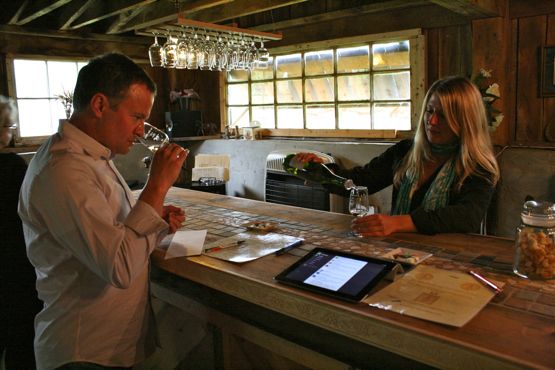
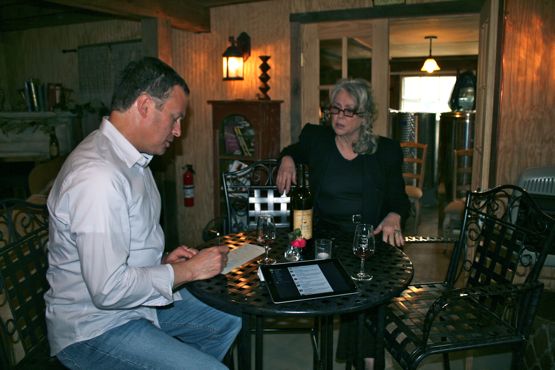
Breaux Vineyards: Paul was able to enjoy his membership benefits which allowed us to taste in the tank room! The folks at Breaux also accommodated my parents; Dad, in particular, was eager to try the wines at Breaux Vineyards. Lots of summer offerings here, too! The 2009 Jolie Blond produced from Seyval Blanc presented grapefruit flavors and a refreshing minerality that mimicked Sauvignon Blanc; in fact, we were able to sample the 2010 Sauvignon Blanc! Made only for members, the 2010 Sauvignon Blanc was all citrus fruit with some grassy notes; acids here were rather muted. My own favorite was the 2009 Viognier with its rich aromatics of honeysuckle and peach. Great for summer seafood dishes like crab cakes, too. Chardonnay lovers may like the steel fermented 2009 Madeleine’s Chardonnay with its pear notes and crisp finish. For those who prefer summer wines on the sweeter side, the slightly sweet 2010 Jennifer’s Jambalaya with its notes of honeysuckle, peach, and orange peel should fit the bill. (Residual sugar is .5%.) We left Breaux with almost two cases of wine. A huge THANKS to Breaux for the wonderful hospitality.
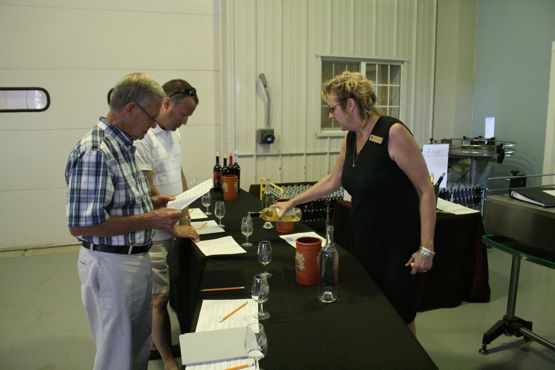
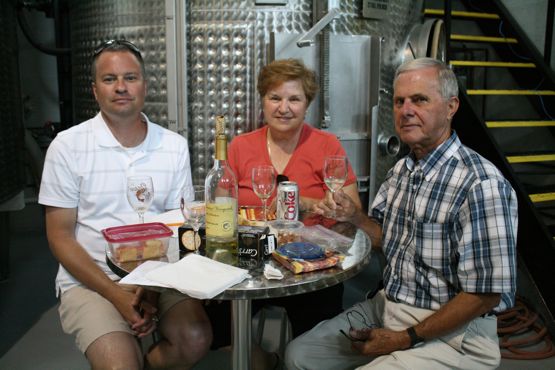
In a note about changes at Breaux Vineyards, we were able to chat with new winemaker David Castano during a previous visit to the winery. David Castano was truly excited to be part of the Breaux team, and I asked him what he found most challenging about making wine in Virginia. His reply? The weather—humidity, persistent rainfall, hurricanes all can create problems for the winemaker; however, he added that experienced winemakers know how to overcome these challenges. This past spring seems to confirm David’s point with constant rain in April and early May and then scorching heat in early June. David Castano brings experience as an oenologist and wine consultant to Breaux Vineyards, and we’re confident that he will continue Breaux’s legacy of producing quality wines.
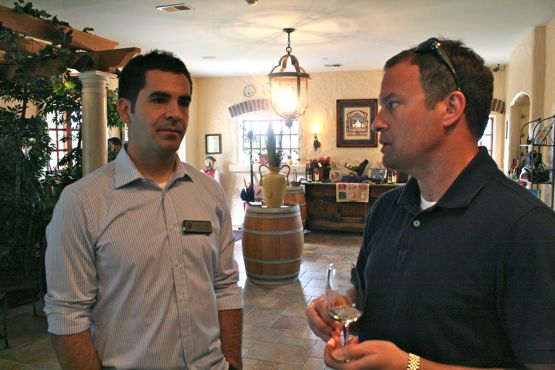
If your stock of summer wines is running low, visit these wineries to replenish the wine racks. Be sure, though, to mention that Virginia Wine Time sent you.
Warren’s parents have been in town for the last week and we thought it would be a good idea to show them some wineries in Loudoun County. One of the wineries we visited was Notaviva Vineyards. We have visited them several times before and have enjoyed our visits. The tasting menu has expanded since our last visit so it was time to try the new wines.
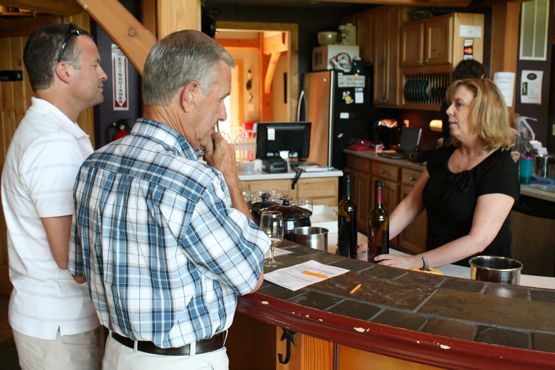
We started the white wines with the 2009 Vincero Viognier. We found this one crisp, refreshing, and full of fruit. This viognier was fermented in stainless steel. Warren’s father put his gold star next to this one. We continued with the 2009 Ottantotto Viognier. This second viognier was fermented in French oak barrels and contains 1% chardonnay. We noted some nice fruit flavors and a round mouth feel. We also noticed the oak presence. We finished the white wines with the 2009 Calor Chardonnay. This one was fermented in French oak barrels, contains 1% viognier, and has 1% residual sugar. We barely noticed the 1% residual sugar but did note the pear and apple flavors.
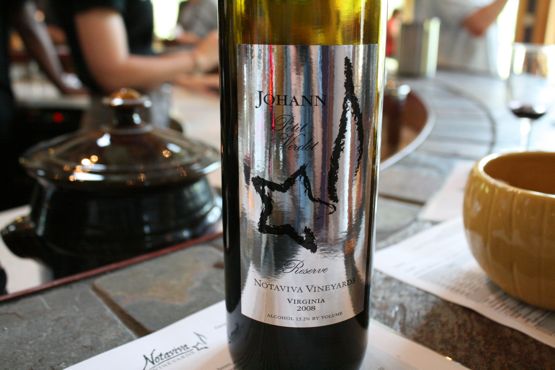
The first of the reds was the 2009 Celtico Chambourcin. This is actually a blend of 92% Chambourcin, 4% Merlot, 1% each of Tannat, Cabernet Sauvignon, Cabernet Franc, and Petit Verdot. We noted bright fruit and smoke on this one. The next red was the 2009 Cantabile Cabernet Franc. This one gets our gold star. We noted tobacco, currents, spice, and black pepper. We all agreed that this one will only get better with time. The next red was completely new to us. It was the 2008 Johann Petit Verdot Reserve. We noted blackberry and vanilla. We thinking this one has aging potential. It will surely change each time you taste it. The last red was the 2009 Gitano Chambourcin. I skipped this one but Warren noted cherry and spice. This one has 7% residual sugar.
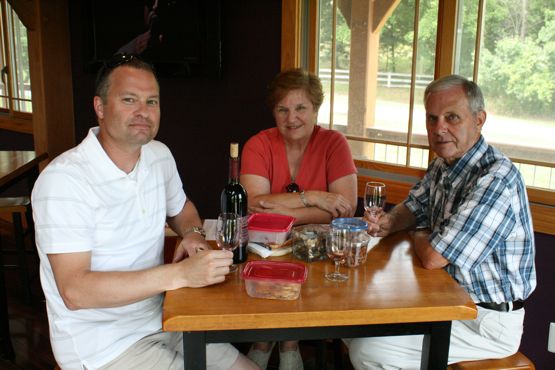
Once we finished our tasting we decided on the 2009 Cantabile Cabernet Franc to enjoy with lunch. It paired well with our ham sandwiches, hard cheeses and crackers. It certainly deserved the gold star we awarded it. As you can tell from the names of the wines, Notaviva weaves their wines with music. Each year they have a music event to celebrate their anniversary, The Notaviva Experience. It’s an evening of music paired with their wines. The event is coming up soon. We won’t be able to make it but you should try to attend. You can find out more information about the event here. The next time you visit Notaviva be sure to tell them Virginia Wine Time sent you!
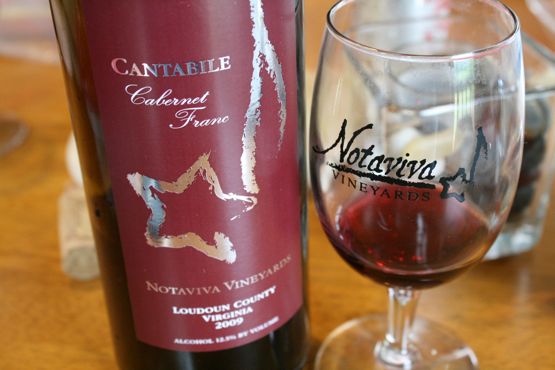
A few weeks ago on our way home from the Chrysalis Hottest Jazz event we stopped at Piedmont Vineyards and Winery to check out the new reds on the tasting menu. Gerhard Von Finck has been working hard the last few months and it was time to taste the fruits of his labor. A few of our friends joined us for the tasting. We had recently tasted the full menu so we decided to focus on the new reds. Our friends, however, tasted all the wines and enjoyed what they tasted.
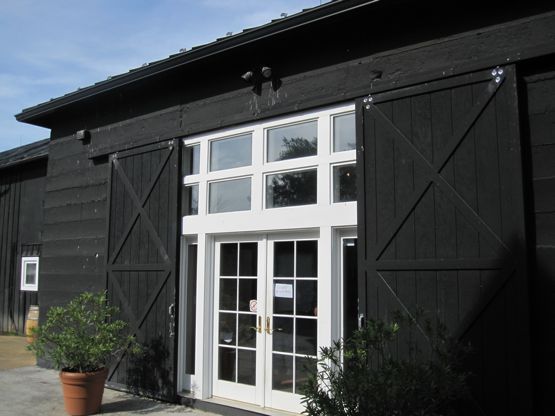
The first new red for us was the 2010 Chambourcin. This was aged in oak for 8 months and is dry. We noted smoke, pepper, and berry flavors on the nose. In the mouth we picked up blueberry, plum, cherry, and black pepper. We noticed the acids were balanced as well.
The next new red to us was the 2009 Merlot. This one spent 18 months in oak. Right away we noticed the beautiful color and the cherry notes on the nose. This one is a fruit forward wine with lots of berry flavors in the mouth. While this one has already spent 18 months on oak, we think it could benefit from 6 months on your rack before enjoying.
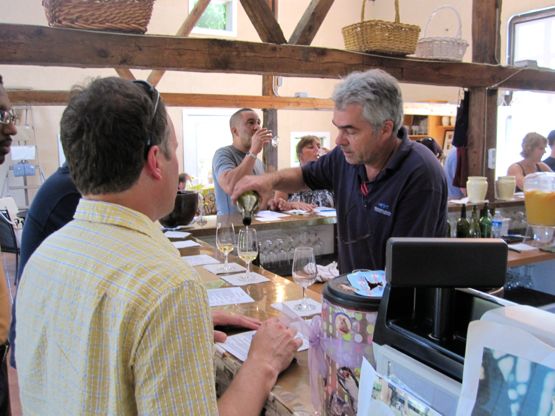
Up next was the 2009 Cabernet Sauvignon. This one was aged for 18 months in new Hungarian Oak barrels. Gerhard suggests you age this one another 12 to 24 months before enjoying. We noticed earthy elements, blueberry, cherry, blackberry, and pepper. We also jotted down “a hint of vanilla on the finish.” We think this one is going to be beautiful in a year or so and would go very well with some nice steaks.
The final red we tasted was the 2010 Hunt Country Red, Chambourcin. This one is unoaked and has 3% residual sugar. Gerhard suggests this one be enjoyed chilled or can be used for the base of Sangria. Our friend and sometimes wine blogger, Michael, really enjoyed this one. We even wrong his name next to it on the tasting sheet. Michael even mentioned that he’d enjoy this one chilled on his deck on a warm afternoon.
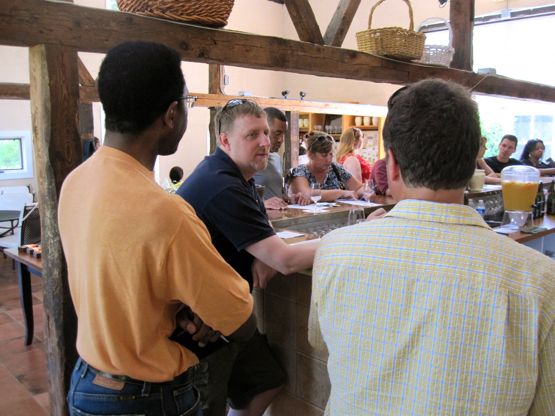
While we only concentrated on the new reds during this visit, we can certainly recommend chardonnays that Gerhard produces. Piedmont is known for their chardonnays and you can’t go wrong with any one of the three on the tasting menu. We always enjoy our time at Piedmont Vineyards and Winery. Talking wine with Gerhard is always a joy. Plan a visit to Piedmont soon and when you do, tell Gerhard Virginia Wine Time sent you!